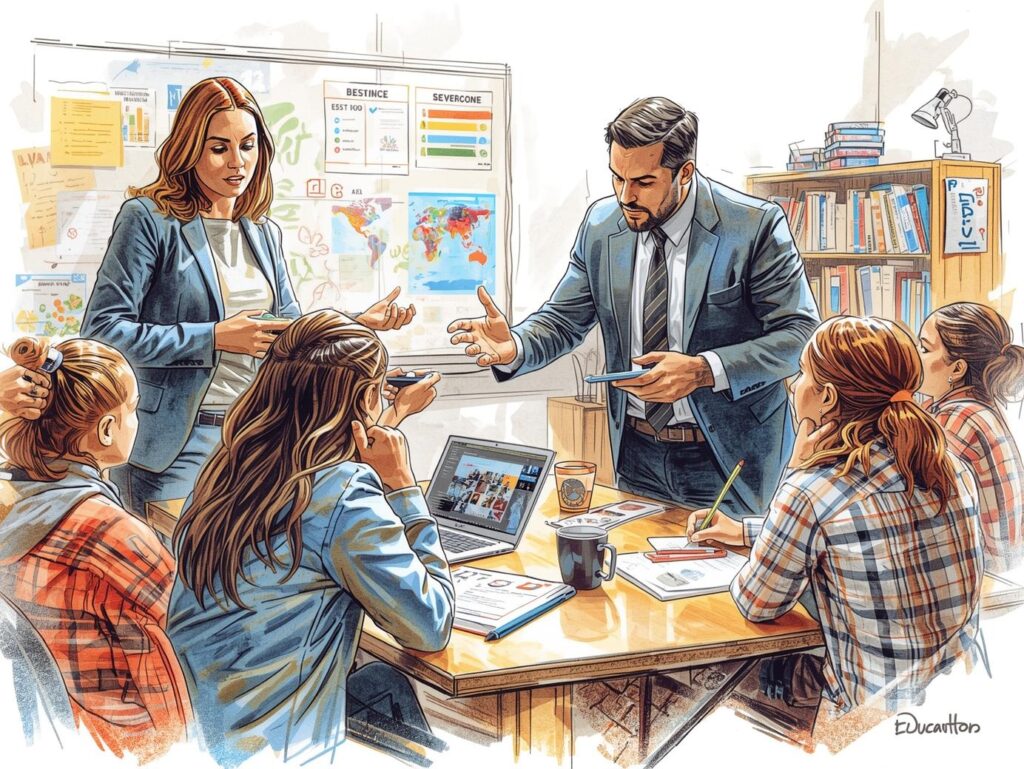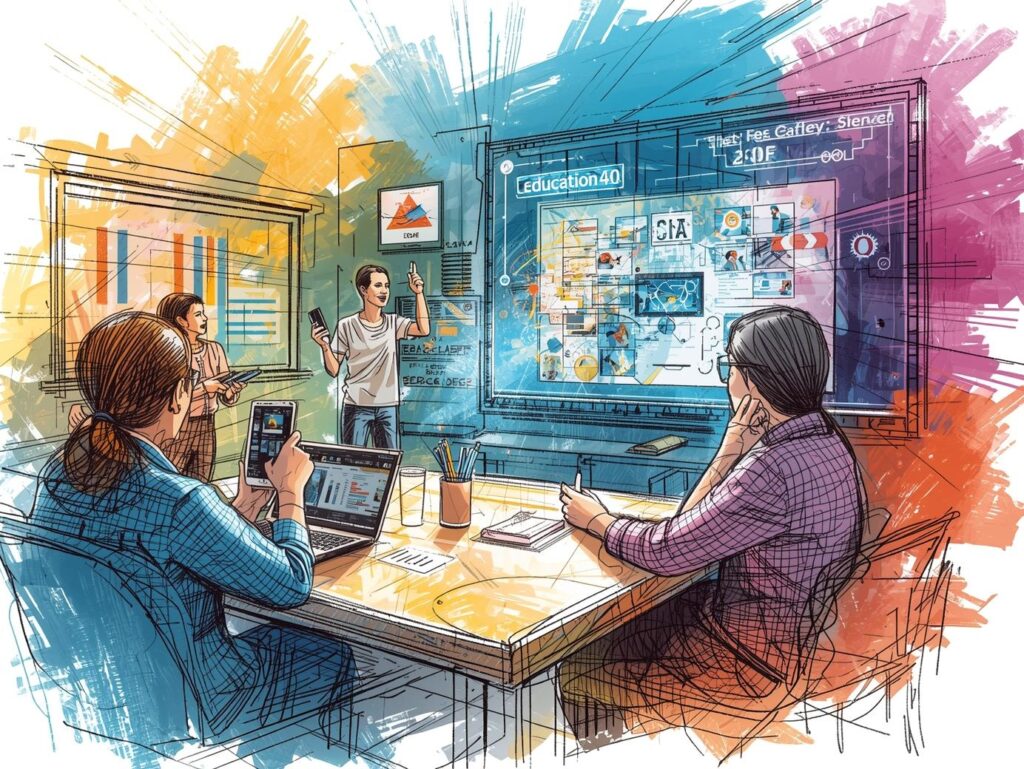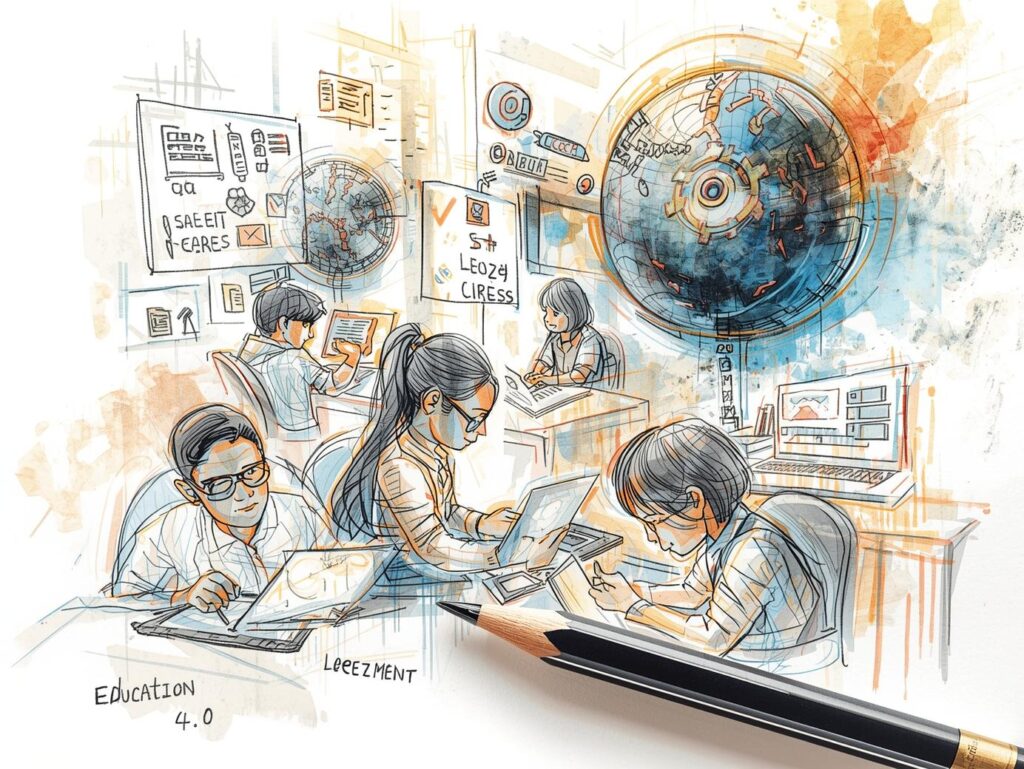Introduction
The 21st century has ushered in a revolution in education, driven by Artificial Intelligence (AI), digital tools, and global connectivity. Education 4.0 goes beyond traditional classrooms, integrating technology, personalization, and real-world problem solving to prepare students for a rapidly changing society.
For countries like Peru and organizations such as CHUYA SONCCO, embracing Education 4.0 means transforming learning into an inclusive, adaptive, and forward-looking experience, empowering youth to thrive in the digital era.

Key Principles of Education 4.0
1. Personalized Learning
- AI-driven platforms tailor lessons to individual student needs, pace, and learning style.
- Adaptive learning systems provide real-time feedback, supporting mastery and engagement.
2. Collaborative and Experiential Learning
- Students work on projects that solve real-world problems, fostering teamwork and creativity.
- Virtual classrooms and online collaboration tools connect learners across regions and cultures.
3. Integration of Emerging Technologies
- Tools like AI, virtual reality (VR), augmented reality (AR), and gamification enhance learning experiences.
- Simulations, digital labs, and interactive content make education engaging and applied.
4. Lifelong Learning
- Education 4.0 recognizes that learning extends beyond formal schooling.
- Continuous learning, online courses, and professional development enable adaptability in a changing labor market.
5. Skills for the Future
- Focus on critical thinking, problem-solving, digital literacy, emotional intelligence, and ethical decision-making.
- Prepares students for careers that may not yet exist, fostering innovation and resilience.

Opportunities and Benefits
1. Democratization of Education
- AI and online platforms bring quality education to rural and marginalized communities.
- Students gain access to global knowledge and tools regardless of geography or socioeconomic status.
2. Teacher Empowerment
- AI supports teachers by providing insights into student progress and learning gaps.
- Teachers can focus on mentorship, guidance, and fostering creativity rather than repetitive tasks.
3. Data-Driven Decision Making
- Learning analytics enable schools to track progress, optimize curricula, and improve outcomes.
4. Global Collaboration
- Students and educators can participate in international projects, hackathons, and research initiatives.
- Exposure to diverse perspectives strengthens innovation and intercultural competence.
Challenges in Implementing Education 4.0
1. Digital Divide
- Unequal access to devices, internet, and digital resources limits participation.
- Rural and marginalized populations are often left behind without targeted initiatives.
2. Teacher Training
- Educators need skills in AI, digital tools, and new pedagogical approaches.
- Professional development programs are essential to successful adoption.
3. Curriculum Reform
- Traditional curricula may not align with the competencies required for the digital era.
- Education systems must adapt to emerging skills and technologies.
4. Ethical Considerations
- AI in education raises questions about data privacy, surveillance, and bias.
- Policies must ensure that technology is used responsibly and equitably.

Global Examples
Finland
- Emphasizes student-centered, project-based learning integrated with digital tools.
- Teachers are trained to use AI and VR to enhance instruction.
Singapore
- National strategy integrates AI, robotics, and coding into K-12 education.
- Focuses on personalized learning pathways and 21st-century skills.
Chile
- Implements digital classrooms and virtual labs to reach rural students.
- Partnerships with universities and tech companies enhance access and quality.
Peru
- Pilot programs in STEM and digital learning show promise, but scaling requires infrastructure, teacher training, and inclusive policies.
The Role of CHUYA SONCCO
CHUYA SONCCO envisions Education 4.0 as a strategic driver for human development and innovation:
- Digital Classrooms and Labs
- Establishing AI-powered learning platforms and digital labs for students in underserved areas.
- Teacher Capacity Building
- Training educators in AI, digital pedagogy, and ethical technology use.
- Youth Innovation Programs
- Encouraging students to develop projects in AI, robotics, and digital entrepreneurship.
- Inclusive Access Initiatives
- Providing devices, internet access, and educational content for rural and marginalized communities.
- Research and Policy Advocacy
- Collaborating with governments and institutions to develop standards, curricula, and policies for Education 4.0 in Peru.
Conclusion
Education 4.0 represents a paradigm shift: from standardized teaching to personalized, technology-enhanced, and skills-focused learning. By embracing AI, digital tools, and experiential learning, we can prepare youth for the challenges and opportunities of the 21st century.
For CHUYA SONCCO, Education 4.0 is a mission to empower, inspire, and include. Through innovative programs, teacher training, and equitable access, we aim to ensure that all students—regardless of location or background—can thrive as innovators, problem-solvers, and global citizens in the digital era.





